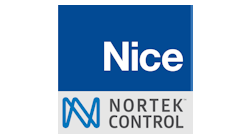A little over a year ago, a pinhole leak on a piece of PVC tubing under my kitchen sink led to a flooding event and a $150,000 insurance claim. Sure, if I had water leak sensors placed in the right spot, it would have triggered my alarm system, but the flow would have continued until I was able to arrange to get the water shut supply shut off (I was 100 miles away).
This column was supposed to be a helpful piece of advice about water flow, leak monitoring and flow control. But, as so often happens, further digging led me down a path I didn’t expect.
I knew Nortek Security & Control (www.nortekcontrol.com) was working on solutions to the mishap I had, so, in contacting them, I was directed to Avi Rosenthal, Vice President of Security & Control. We discussed the premise that a sensor normally connected to a security system could somehow be part of a solution with a significant ROI both to the homeowner and the insurer. The Insurance Information Institute ranks water and freezing damage second only to wind and hail damage in claims frequency (1.79 claims per 100 house years). Mr. Rosenthal pointed out that, if a water leak is found within the first 30 minutes, claims are about 90-percent less costly.
A new product announced by Nortek at this year’s Consumer Electronics Show (CES) called the GoControl Smart Flow Detector addresses this for about $150, by useing Z-Wave technology to report to an intelligent panel for monitoring water flow from the main, and alarming when excess flow is detected. It gets pretty interesting from there.
How Z-Wave Works
Z-Wave is a license-free 900 MHZ, FSK radio technology. It is covered by standard ITU G.9959, “Short range narrow-band digital radio communication transceivers.” Bit rate is a modest 9.6, 40 or 100 Kbps, AES 128 bit encryption is available, and most products function as information repeaters, creating a mesh-type network. Domains may have up to 232 nodes, including a “domain master”, with an 8 bit identifier.
An example of a domain is a Home Area Network (HAN). An inter-domain bridge (IDB) may connect one or more HANs to a local area network, which, in turn, may connect to the Internet. Z-Wave is open source, and approximately 325 companies, including Nortek, belong to the Z-Wave Alliance. More than 50 million such products are installed in homes worldwide, and according to Nortek, popular uses include thermostat control, lighting control, virtual three-way switches, motor or fan control, and security and life safety sensors.
As an example, for about $300, you can purchase a Schlage Z-Wave deadbolt lock kit including wireless keypad deadbolt, wireless bridge, Light Module, cable and batteries.
“With intelligence in a panel employing an integrated Z-Wave receiver, the stage is set for moving from ‘home control’ to ‘home automation,’” Rosenthal says, “putting the concept of a Smart Home within easy reach.” He cites examples of occurrences when a homeowner is away (inferred by the alarm system being armed), such as an open garage door, pump failure, lights turned on, and, of course, excess water flow. “We’re just scratching the surface”’ he says.
The wireless technology makes the installation of devices relatively simple. Many new security panels already have Z-Wave built in, but, for legacy panels, a device such as a dry contact input/output bridge may be used to interface to a Z-Wave gateway controller or hub. Many of these controllers have smart apps that allow remote access over the Internet for remote control and monitoring of the home environment.
With an increasing number of Z-Wave capable devices coming onto the market, the possibilities for creating a truly intelligent home are boundless. Think of this as a home version of IoT (Internet of Things).
Making Z-Wave Work for the Homeowner
Back to my water leak mishap, the insurance company paid for a water flow detector/water shut off device, whose installed cost was about $2500. It came with a back-up battery good for 24 hours, control panel, and integrated sensor and valve.
Nortek’s Smart Water Flow Detector would cost about $150 and is powered by 110 VAC. It just wraps around the water pipe, so installation cost is negligible. The device would work in conjunction with a Z-Wave connected valve or actuator.
Another device I found manufactured by Eco-Net Controls sells for $135, is powered by 12 VDC and sits next to a lever-type water shut-off. It employs a rocker arm to mechanically close the valve, without touching the plumbing.
Another, the Fortrez WV-01, is a Z-Wave-capable valve powered by 12 VDC and sells for $400 to $500.
So, for an installed cost of anywhere from $250 to $750, with a Z-Wave controller already in place, you have a water monitoring and flow control system.
Z-Wave controllers are as low as $100, not a big financial investment to get some brains for a smart home. Next, for critical functions like water leaks, the power issue has to be thought through. Battery-powered devices use various wake-up techniques to conserve power. For line-powered devices, back-up power (UPS) would be essential for a reliable system.
Once early adopter homeowners and dealer/installers start routinely implementing basic Z-Wave infrastructure and making available functions known, smart home implementations should really take off. Hopefully, insurance rates will reflect the reduced risk.
Ray Coulombe is Founder and Managing Director of SecuritySpecifiers.com and RepsForSecurity.com. Reach him at [email protected], through LinkedIn at www.linkedin.com/in/raycoulombe or on Twitter, @RayCoulombe.



